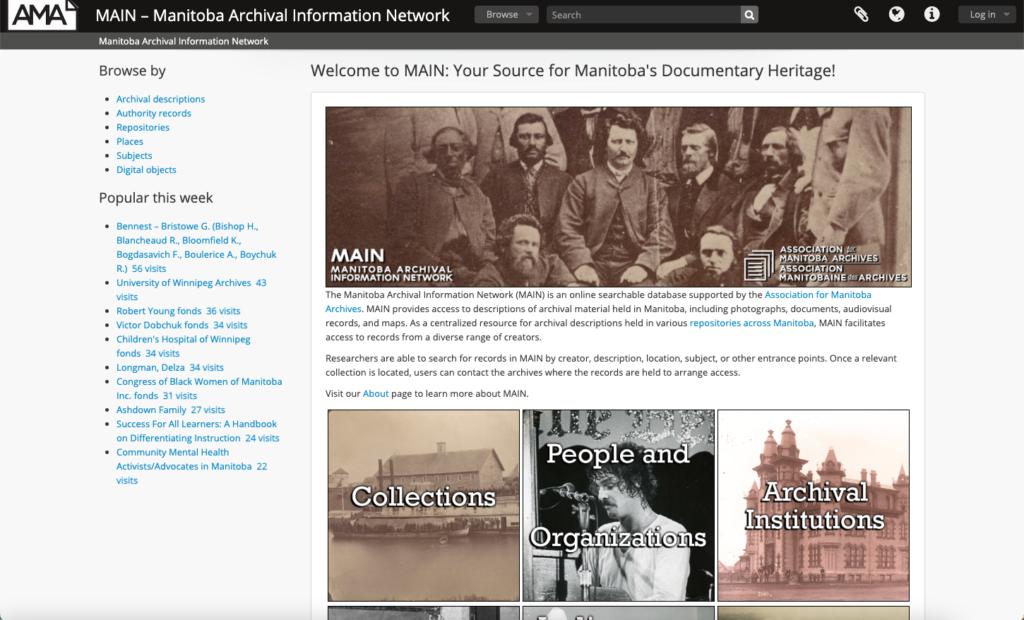Efforts in preserving collections are of limited value if we cannot make them accessible to users. If we hope for our collections to be researched or reused, users need to be able to easily find and gain access to these collections online. That’s where a tool like Access to Memory (AtoM) becomes useful.
About AtoM
AtoM is a web-based, open-source application for standards-based archival description and access in a multilingual, multi-repository environment.
All user interface elements and database content can be translated into multiple languages. AtoM comes with several translations installed, all of which are generously provided by volunteer translators from the AtoM User Community.

AtoM and MAIN
The Manitoba Archival Information Network (MAIN) is an online searchable database powered by AtoM. MAIN provides access to descriptions of archival material held in Manitoba, including photographs, documents, audiovisual records, and maps. As a centralized resource for archival descriptions held in various repositories across Manitoba, MAIN facilitates access to records from a diverse range of creators. Researchers are able to search for records in MAIN by creator, description, location, subject, or other entrance points.
AtoM Links
Why AtoM
Brett Lougheed, Director of the Oral History Centre at the University of Winnipeg, provides an overview of AtoM and the Manitoba Archival Information Network (which is powered by AtoM). Providing guidance on the web-based open-source tool, and how it is utilized when creating descriptive catalogue records for oral history collections.
Webinar feature
Building Discoverability, Access, and Versatility into Archived Oral History Collections | Presented by the Oral History Centre at the University of Winnipeg
